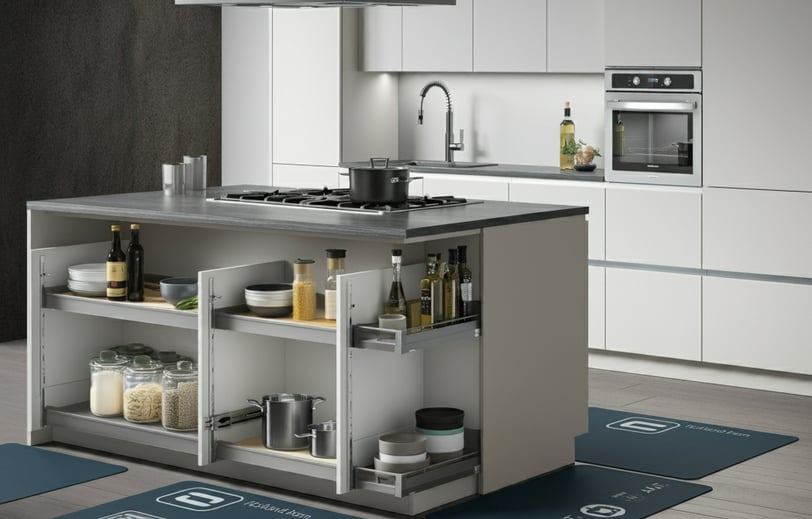How to Design an Ergonomic Kitchen: Remodeling for Comfort and Efficiency
Learn how to create a kitchen that's not just beautiful, but also comfortable and efficient. Discover key ergonomic principles and product recommendations to transform your kitchen into a user-friendly space.
Eunoia Digital Solution
9/3/20242 min read


An ergonomic kitchen is designed to minimize discomfort and maximize efficiency, making cooking and cleaning easier and more enjoyable. Whether you're planning a full remodel or looking to make small improvements, these tips will help you create a kitchen that works for you, not against you.
1. Optimize Your Kitchen Triangle
The kitchen triangle (the path between your sink, refrigerator, and stove) should be between 13 and 26 feet total. This ensures everything is within reach without being cramped.
2. Choose the Right Counter Height
Standard counter height (36 inches) works for most people, but consider varying heights for different tasks.
3. Install Adequate Lighting
Proper lighting reduces eye strain and the risk of accidents. Include a mix of ambient, task, and accent lighting.
4. Opt for Drawer Storage
Deep drawers for pots and pans are easier on your back than low cabinets.
5. Choose Easy-to-Clean Surfaces
Smooth, non-porous surfaces like quartz or stainless steel are easier to clean and maintain.
6. Install a Hands-Free Faucet
Reduce the spread of germs and make cleaning easier with a touchless faucet.
7. Use Pull-Out Shelves
Make items in deep cabinets more accessible with pull-out shelves.
8. Consider Your Appliance Placement
Place the microwave at or below counter height, not above the stove, to avoid reaching up with hot foods.
9. Choose Ergonomic Kitchen Tools
Look for tools designed to reduce strain on your hands and wrists.
10. Install a Pot Filler
A pot filler near your stove eliminates the need to carry heavy pots of water across the kitchen.
11. Use Anti-Fatigue Mats
Reduce strain on your feet, legs, and back while standing for long periods.
12. Optimize Corner Storage
Make the most of corner cabinets with lazy susans or pull-out systems.
13. Choose Easy-to-Grip Cabinet Hardware
Opt for D-shaped handles or pulls that are easy to grasp, even with wet or soapy hands.
14. Install a Wall Oven
A wall oven at the right height eliminates the need to bend down to use the oven.
15. Use Vertical Storage
Utilize wall space for storage to keep countertops clear and items within easy reach.
Remember, an ergonomic kitchen is all about creating a space that works for your specific needs and habits. Take the time to analyze your current kitchen use and pain points to determine which ergonomic improvements will have the biggest impact on your daily life.
Ready to start your ergonomic kitchen transformation? We'd love to hear about your plans!
